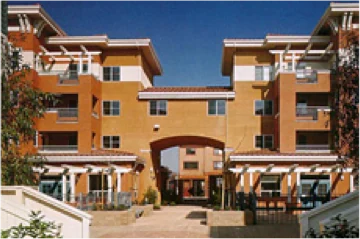Overpayment and Overcrowding
Analysis of housing characteristics includes an estimate of the number of households and lower-income households, by tenure (rental or ownership), paying more than 30 percent of their income on housing. The analysis must also identify the number of households, by tenure, in overcrowded housing situations.

Identifying and evaluating existing housing needs are critical components of the housing element. The analysis will help local governments identify existing housing conditions that require addressing and households with housing cost burdens or unmet housing needs.
An adequate analysis of these characteristics should include a quantification of the total number of persons, households or units; a quantification and qualitative description of the need; and identification of potential solutions and resources to address the need. Where a serious unmet housing need is identified, program alternatives and responses should be provided.
Where available, information on tenure characteristics (owner versus renter) should be included. Tenure information is important because it affects the nature of housing problems encountered, as well as the types of programs or resources needed to address them.
Government Code
Government Code Section 65583(a) requires “…an analysis and documentation of household characteristics, including level of payment compared to ability to pay, housing characteristics, including overcrowding, and housing stock condition,” (Government Code 65583 (a)(2)).
Requisite Analysis
Overpaying
Housing is generally the greatest, single expense for California families. Current standards measure housing cost in relation to gross household income: households spending more than 30 percent of their income, including utilities, are generally considered to be overpaying or “cost burdened.” Severe overpaying occurs when households pay 50 percent or more of their gross income for housing.
The impact of high housing costs falls disproportionately on extremely low-, very low-, and low-income households, especially renters. While some higher-income households may choose to spend greater portions of their income for housing, the cost burden for lower-income households reflects choices limited by a lack of a sufficient supply of housing affordable to these households. In 2010, according to the American Housing Survey, 41 percent of California's 3.2 million low-income renter households paid more than half of their income on rent. According to data from the U.S. Department of Housing and Community Development collected between 2006 and 2010, of the state's 2.2 million very low-income renters, 55.9 percent paid more than half of their income for rent. Low-income households that overpay for housing frequently have insufficient money left for other critical essentials, including food and medicine. This is a significant hardship for too many families and seniors; but it also impacts local economies, because money that might otherwise be spent in local stores (generating sales-tax revenues for the community) are being spent on housing.
An adequate analysis should:
- Describe total households and identify and analyze the number of lower-income households, by tenure (rental or ownership) that are paying more than 30 percent of their income toward housing. It should also include the number of households that pay 50 percent or more of their gross income toward housing.
- Where possible, identify households most significantly impacted by cost burdens (large families, seniors, etc.).
- Identify potential resources and programs to address the housing need.
Data Sources
U.S. Census 2000 Summary File 3 (SF 3):
- Renters - H73: Household income in 1999 by gross rent as a percentage of household income in 1999.
- Owners - H97: Household income in 1999 by selected monthly owner costs as a percentage of household income in 1999.
HUD’s Consolidated Housing Affordability Strategy
U.S. Census American Community Survey: B25106 Tenure by Housing Costs as a Percentage of Household Income in the Past 12 Months
Pre-approved data packages are now available from HCD or your regional council of government.
The data package information can be found by clicking the Regional Housing Needs section on the Regional Housing Needs Allocation and Housing Elements webpage.
Sample Tables
The following sample tables will help organize critical information. The information provided in the tables should be tailored to the jurisdiction and followed by appropriate analysis. (Note: Sample tables are not intended to substitute for addressing the analytical requirements of housing-element law.)
| Housing Cost as a Percentage of Household Income | |||||
|---|---|---|---|---|---|
| Owner-Occupied Units | |||||
| Income Range | Total Households | % of Total Households | 0-20% of Household Income | 20-29% of Household Income | 30-34+% of Household Income |
| $0-19,999 | |||||
| $20,000-34,999 | |||||
| $35,000-49,999 | |||||
| $50,000 + | |||||
| Subtotal | |||||
| Renter-Occupied Units | |||||
| Income Range | Total Households | % of Total Households | 0-20% of Household Income | 20-29% of Household Income | 30-34+% of Household Income |
| $0-19,999 | |||||
| $20,000-34,999 | |||||
| $35,000-49,999 | |||||
| $50,000 + | |||||
| Subtotal | |||||
| Total | |||||
| Source: U.S. Census American Community Survey B25106. Note: Some households are not accounted for; therefore, figures may differ slightly for other U.S. Census estimates for total households. |
|||||
| Percent | ||
|---|---|---|
| Percentage of Low-Income Households Overpaying for Housing | ||
| Owner-Occupied Units | ||
| Households with incomes less than 80% area median income | Paying 30% or more of household income | |
| Renter-Occupied Units | ||
| Households with incomes less than 80% area median income | Paying 30% or more of household income | Percent |
| Housing Problems for All Households | |||
|---|---|---|---|
| Total Renters | Total Owners | Total Households | |
| Household income <= 30% median family income | |||
| % With any housing problems | |||
| % Cost burden > 30% | |||
| % Cost burden > 50% | |||
| Household income > 30% to <= 50% median family income | |||
| % With any housing problems | |||
| % Cost burden > 30% | |||
| Household income > 50% to <= 80% median family income | |||
| % With any housing problems | |||
| % Cost burden > 30% | |||
Source: HUD Comprehensive Housing Affordability Strategy (CHAS) Data - Data Query Tool
Overcrowding
The U.S. Census defines an overcrowded unit as one occupied by 1.01 persons or more per room (excluding bathrooms and kitchens). Units with more than 1.5 persons per room are considered severely overcrowded. Overcrowding increases health and safety concerns and stresses the condition of the housing stock and infrastructure. Overcrowding is strongly related to household size (particularly for large and very-large households) and the availability of suitably sized housing. Overcrowding impacts both owners and renters; however, renters are generally more significantly impacted. In 2000, renter households were three times more likely than owners to be overcrowded, regardless of household size.
While family size and tenure are critical determinants in overcrowding, household income also plays a strong role in the incidence of overcrowding. As a general rule, overcrowding levels tend to decrease as income rises, especially for renters (particularly for small and large families). The rate of overcrowding for very low-income households is generally nearly three times greater than households over 95 percent of the area median income. As with renters, owner households with higher incomes have lower rates of overcrowding.
An adequate analysis of overcrowding should:
- Identify and analyze the number of households by tenure (rental or ownership) that live in overcrowded and severely overcrowded units.
- Identify potential resources and programs to address identified needs. For example, a jurisdiction may develop programs and incentives to promote the development of affordable apartments with three or four bedrooms. To address overcrowding for lower-income owners, a community could target a portion of its Community Development Block Grant funds for rehabilitation of housing to add additional bedrooms.
Data Sources
U.S. Census American Community Survey, Tenure by Occupants per Room (Table B25014)
Sample Table
The following sample tables will help organize critical information. The information provided in the tables should be tailored to the jurisdiction and followed by appropriate analysis. (Note: Sample tables are not intended to substitute for addressing the analytical requirements of housing-element law.)
| Housing Condition Survey | ||||||
|---|---|---|---|---|---|---|
| Housing Type | Owner | Renter | Total Overcrowded | |||
| Persons per room | Households | Percent | Households | Percent | Households | Percent |
| 1.00 or fewer | ||||||
| 1.01 to 1.50 | ||||||
| 1.51 or more | ||||||
| TOTAL | ||||||
| % Overcrowded by tenure | ||||||
Source: American Community Survey One-Year Estimates. Tenure by occupants per room.

